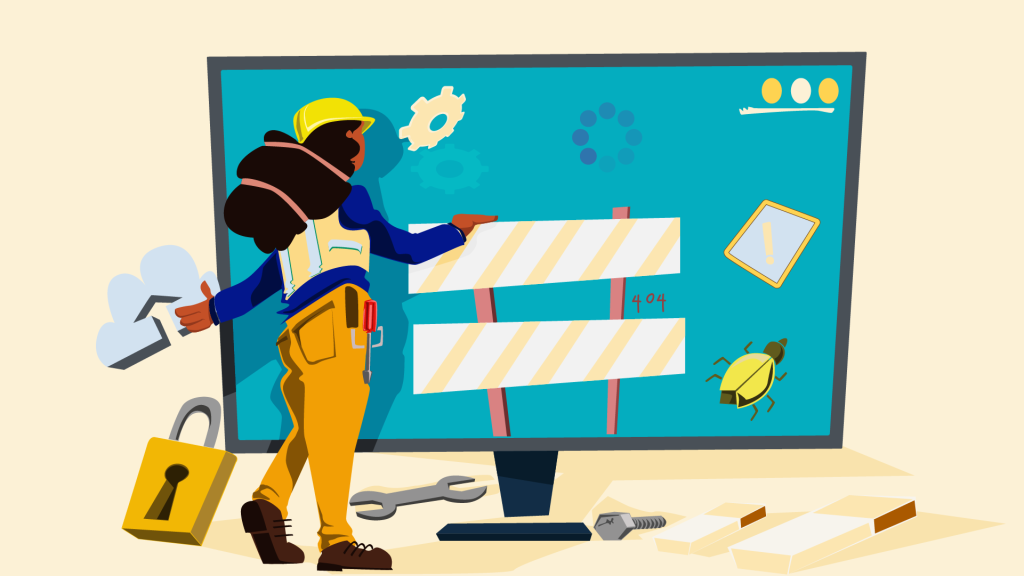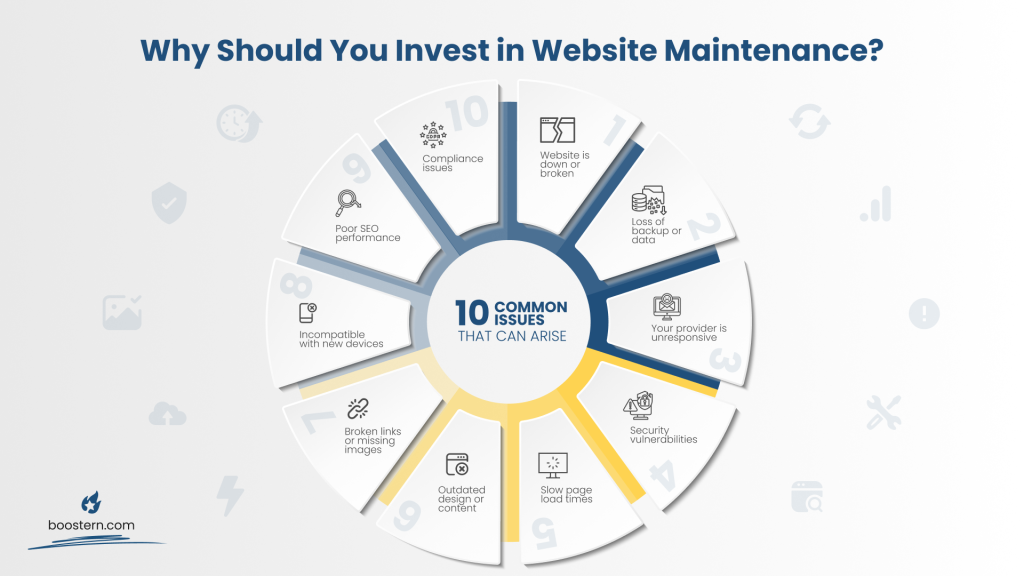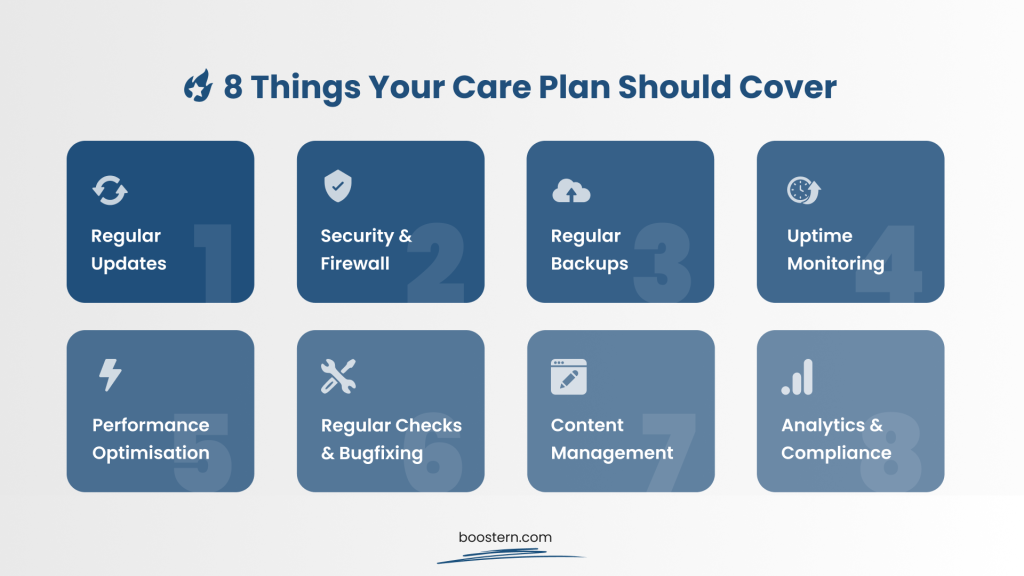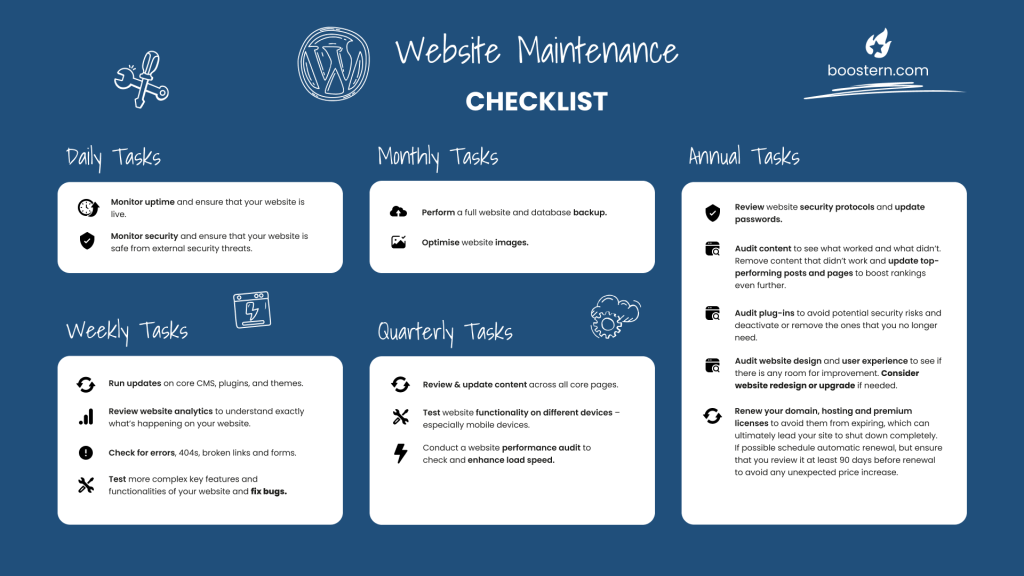Complete Guide to Website Maintenance: Everything You Need to Know
Written by Mate Tagaj
7 min read
Published on Jan 20, 2025
Updated on May 21, 2025
Your nonprofit website is your main tool for telling your organisation’s story. Besides, you might be in charge of several other project websites or tools separately from your core site. But like a garden, without giving them consistent love, your websites may stop working properly. Worse still, they could be left vulnerable to security breaches. Consider your websites as you would a car or a pair of shoes. Regular care prolongs their lifespan. If you overlook minor upkeep, these small issues can accumulate and result in more significant problems down the line. While you don’t need to be a computer wizard to keep your website running, there are a few website maintenance essentials you should know about.

Why Website Maintenance Matters for Nonprofits
Firstly, your core nonprofit website should act as a central hub of information. In fact, it should be the place where people find out what you do. In addition, it’s where people should find your latest news, events and resources, and where you can engage with supporters.
Here’s a list of common issues that can arise with websites, and why you should invest in monthly website maintenance:

#1 Website is down or broken
Without the technical know-how to resolve it, your organisation could lose visibility. Or even worse, your reputation might be hurt until the issue is fixed.
#2 Loss of backup or data
If your nonprofit website isn’t properly backed up and maintained, any data loss can be catastrophic, and recovery could be time-consuming or impossible.
#3 Your provider is unresponsive
If your current website hosting and maintenance services are only costing you money, but your providers fail to reply in crucial times, the prolonged downtime may hurt your online presence and reputation.
#4 Security vulnerabilities
Outdated software or plugins can expose your site to hackers, potentially leading to data breaches or disrupted operations. Regular updates and security checks can prevent anyone but you from getting access to your site.
#5 Slow page load times
As websites grow and age, performance may decline too. Consequently, a slow website may frustrate visitors, reduce engagement, and lower search engine rankings. Regular maintenance ensures your site operates smoothly, and makes the experience better for everyone.
#6 Outdated design or content
A nonprofit website that isn’t regularly updated can appear outdated, reducing its credibility and effectiveness in communicating your mission. Therefore, frequently updating your site with news items, and upcoming events and creating new pages will keep your content fresh.
#7 Broken links or missing images
Broken links or images result in a poor user experience, potentially driving visitors away and damaging your SEO.
#8 Incompatible with new devices
As technology evolves, nonprofit websites need regular updates to remain functional and accessible across different devices.
#9 Poor SEO performance
Without consistent updates and technical fixes, your website’s search engine ranking can drop, reducing visibility and discoverability. On the other hand, a secure and well-maintained site is more likely to appear at the top of search results, which is often where most people will find your organisation.
#10 Compliance issues (GDPR, accessibility)
Not keeping up with legal and accessibility standards can result in fines or alienate a portion of your audience.
Choosing Your Monthly Website Maintenance Packages
No one would leave the maintenance of their car up to chance. You shouldn’t leave your nonprofit website maintenance to chance, either.
Consequently, every nonprofit website should invest in one of the monthly website maintenance packages out there. By investing in website maintenance or care plans, you can ensure your organisation’s websites remain secure, up-to-date, and fully functional, bringing the you peace of mind that they are running smoothly, while also helping you to provide a much better user experience to your supporters.
Now that you’ve made sure to understand nonprofit website maintenance, what exactly should this care plan cover?

#1 Regular Updates
- If your nonprofit website is on WordPress, schedule regular updates for your Content Management System (CMS), plugins, and themes.
- If you have a custom website or web app, make sure that integrations, dependencies and libraries are kept up-to-date.
#2 Security & Firewall
- Implement strong passwords and two-factor authentication for added security.
- Conduct regular security scans to identify vulnerabilities to malware and fix them promptly.
- Complete malware removal to keep your website clean and secure.
- Implement a firewall to block malicious requests.
#3 Backups
- Make sure automatic backups of your website data are stored daily so you can easily restore your site after a system crash or security breach.
- Use a good backup with off-site storage to protect against hardware failure.
#4 Uptime Monitoring
- Use website monitoring tools to be alerted to any downtime or performance issues.
#5 Performance Optimisation
- Monitor your website speed. Check for things like optimised images, database and caching.
- Use performance testing tools to diagnose and fix performance bottlenecks.
- Consider a Content Delivery Network (CDN) to improve loading times for all visitors.
#6 Functionality Checks & Bugfixing
- Proactively address any problems that arise to minimise disruption to your visitors.
- Regularly check for broken links, form functionality, and overall website responsiveness across different devices.
- Test any new plugins or integrations before deploying them on your live site.
#7 Content Management
- Regularly update content on existing pages to maintain freshness and accuracy.
- Schedule the creation and publication of new content to keep your visitors engaged.
- Review and remove outdated or irrelevant content to ensure clarity and focus.
#8 Analytics, Privacy Compliance and Reporting
- Track website traffic and user behaviour using analytics tools to understand your audience better.
- Ensure your website is in line with privacy regulations like GDPR with a well-functioning cookie consent form and up-to-date privacy and cookie policies.
- Leverage the reports to identify improvement areas and base your decisions on data when it comes to your website’s content and strategy.
Can You Perform Website Maintenance Yourself?
Even if you have the skills to keep track of all the website maintenance tasks yourself, we highly recommend letting the experts take control and manage everything for you, so you can focus on other parts of your work that can truly make a difference.
For example, at Boostern, we offer different monthly website maintenance packages for WordPress and custom-built websites. However, the level you choose will entirely depend on the needs of your organisation, the complexity of your website, and how many extra support hours you’d like to have in your care plan.
A basic care plan might be a great choice for a project website that needs to be only kept up and running. For a bigger, organisational website, you might want to invest in a more comprehensive plan that includes bugfixing, content management, page layout updates and functionality enhancements.
The cost of your website maintenance service will vary depending on the plan you choose but also how your website was built, how big it is and what kind of special and complex functionalities it has.
If you’d like to find out more about the services we provide to organisations like yours, get in touch with our team today and we can help select the plan that best suits your needs.
Finally, if you would like to understand more about what is exactly done in a website maintenance package, check out this simple website maintenance checklist:

Conclusion
Your websites are essential parts of your organisation, so it’s important to put in the time and effort to ensure they are consistently running smoothly.
Website maintenance is an ongoing process, but the benefits are undeniable. By taking a proactive approach and implementing a well-defined care plan, you can ensure your website thrives and is protected from cyber-attacks.
Remember, well-maintained websites and applications are powerful tools that can help you improve your credibility and achieve a more impactful online presence.